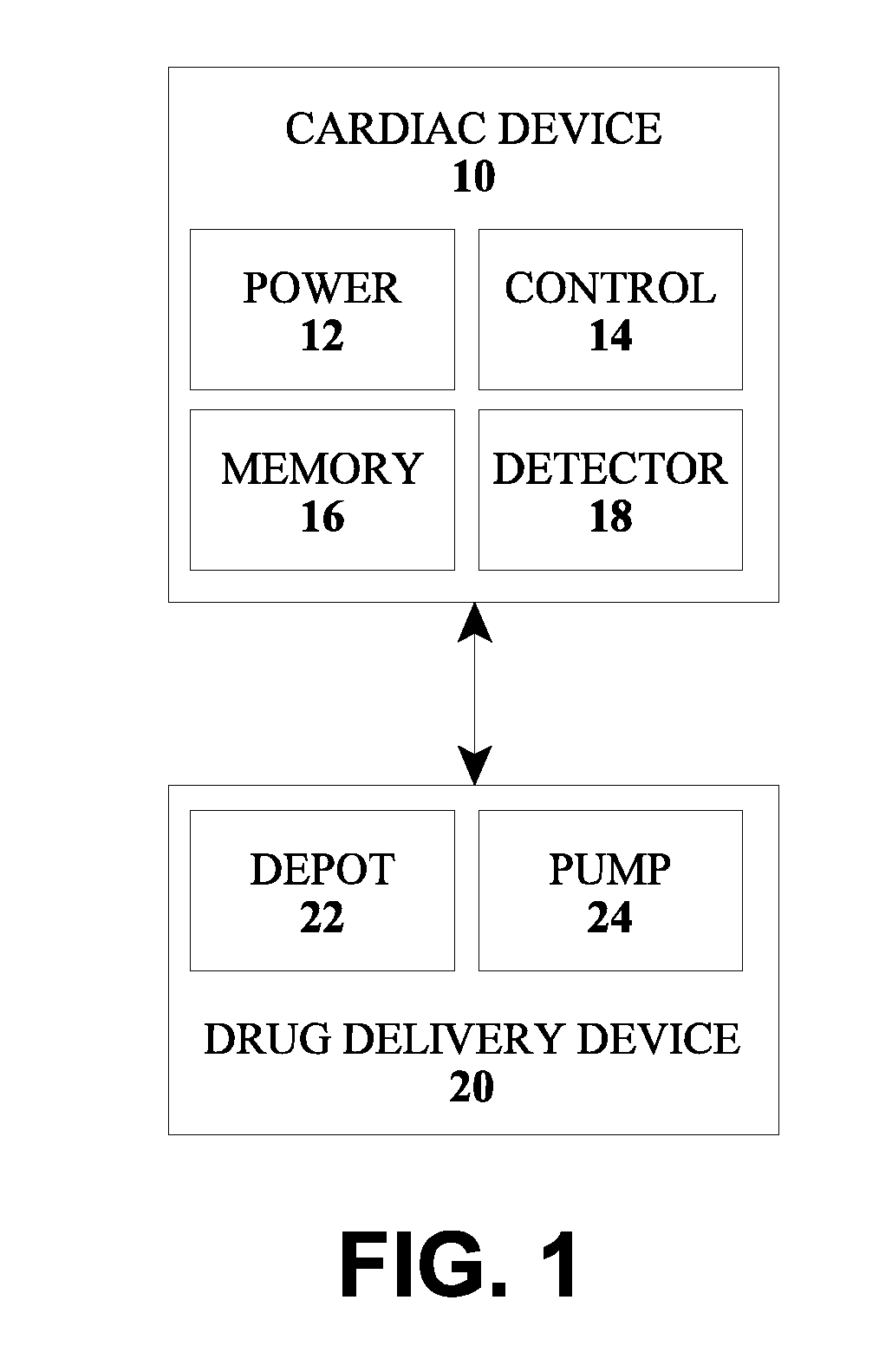Methods and devices for determination of heart arrhythmia type
a heart arrhythmia and type technology, applied in the field of methods and devices for determination of heart arrhythmia type, can solve the problems of ventricular fibrillation, death, and inability to terminate, and achieve the effect of high effective influence on the ventricular or atrial rate, rapid determination of the type of atrial or ventricular arrhythmia, and high sensitivity and specificity
- Summary
- Abstract
- Description
- Claims
- Application Information
AI Technical Summary
Benefits of technology
Problems solved by technology
Method used
Image
Examples
Embodiment Construction
[0034]FIG. 1 shows an version of a device for determination of an atrial and ventricular arrhythmia in a patient's heart including an implantable cardiac device 10 (e.g., a pacemaker, defibrillator or cardioverter), and a drug delivery device 20, which may be implantable or an external device, and which preferably includes a drug depot / reservoir 22 and a pump or other supply mechanism 24. For example, the implantable cardiac device 10 and the drug delivery device 20 may form a combined system as described in EP 2 123 326 A1 and US 2009 / 0292330 A1, which are incorporated herein by reference. The connecting line between the cardiac device 10 and a drug delivery device 20 indicates a communications connection between the devices, which may be wired or wireless via appropriate interfaces.
[0035]The cardiac device 10 includes a power supply 12, a control unit 14, a memory 16 and a detection unit 18 which are connected with each other and are not shown in FIG. 1. The detection unit 18 is a...
PUM
 Login to View More
Login to View More Abstract
Description
Claims
Application Information
 Login to View More
Login to View More - R&D
- Intellectual Property
- Life Sciences
- Materials
- Tech Scout
- Unparalleled Data Quality
- Higher Quality Content
- 60% Fewer Hallucinations
Browse by: Latest US Patents, China's latest patents, Technical Efficacy Thesaurus, Application Domain, Technology Topic, Popular Technical Reports.
© 2025 PatSnap. All rights reserved.Legal|Privacy policy|Modern Slavery Act Transparency Statement|Sitemap|About US| Contact US: help@patsnap.com



